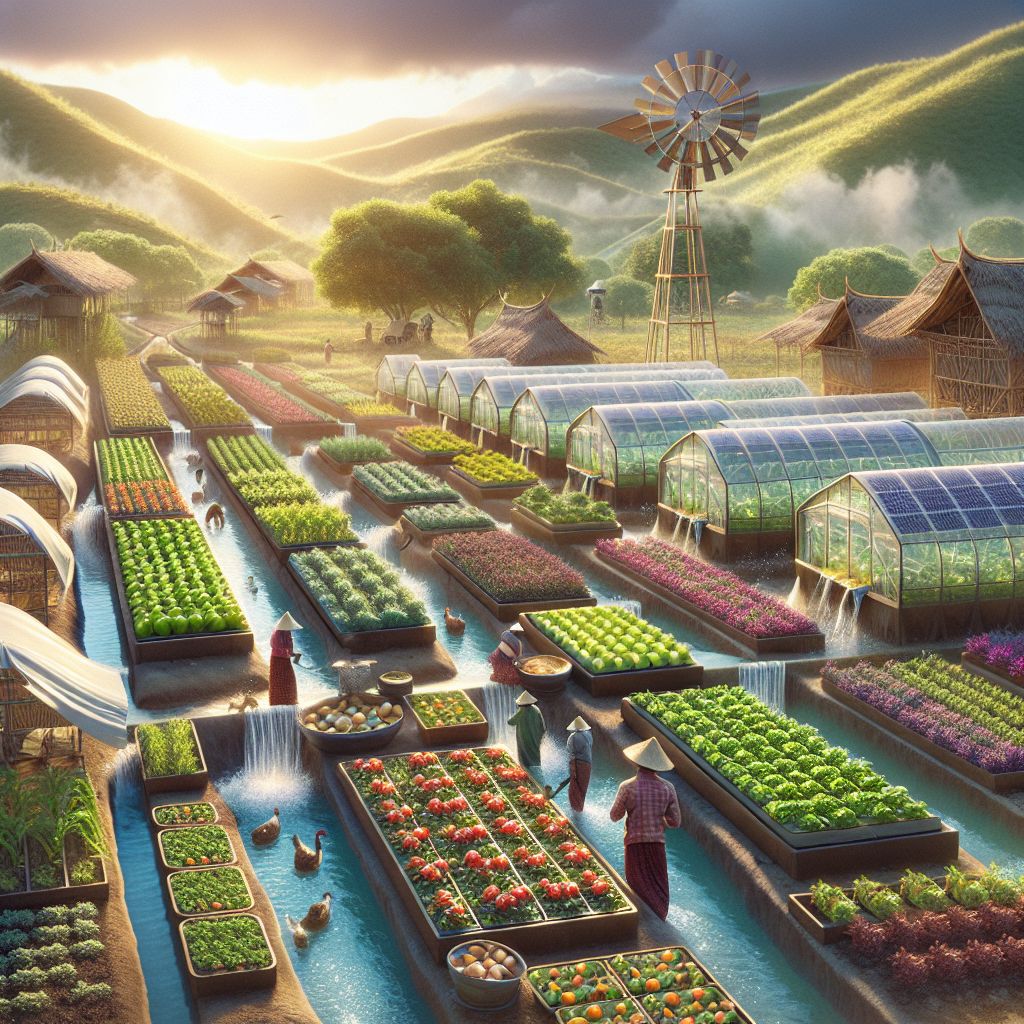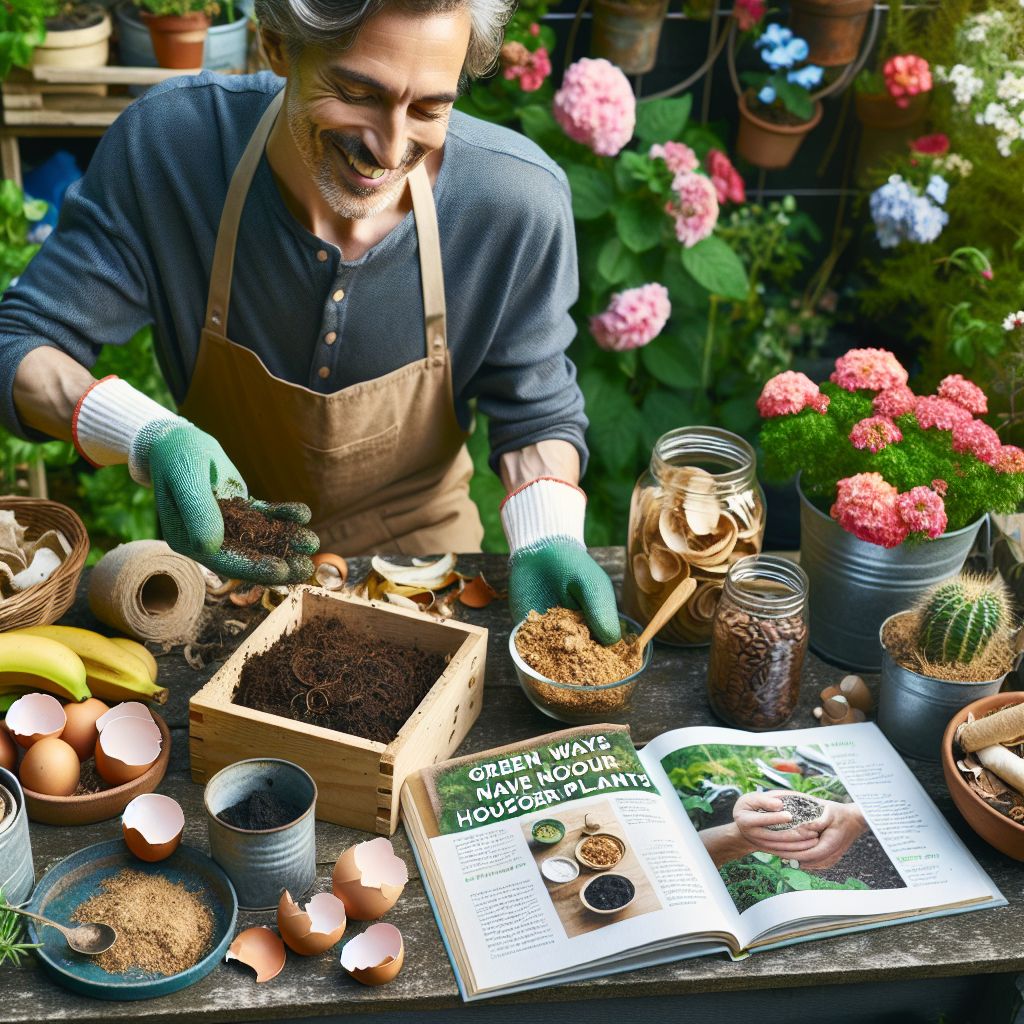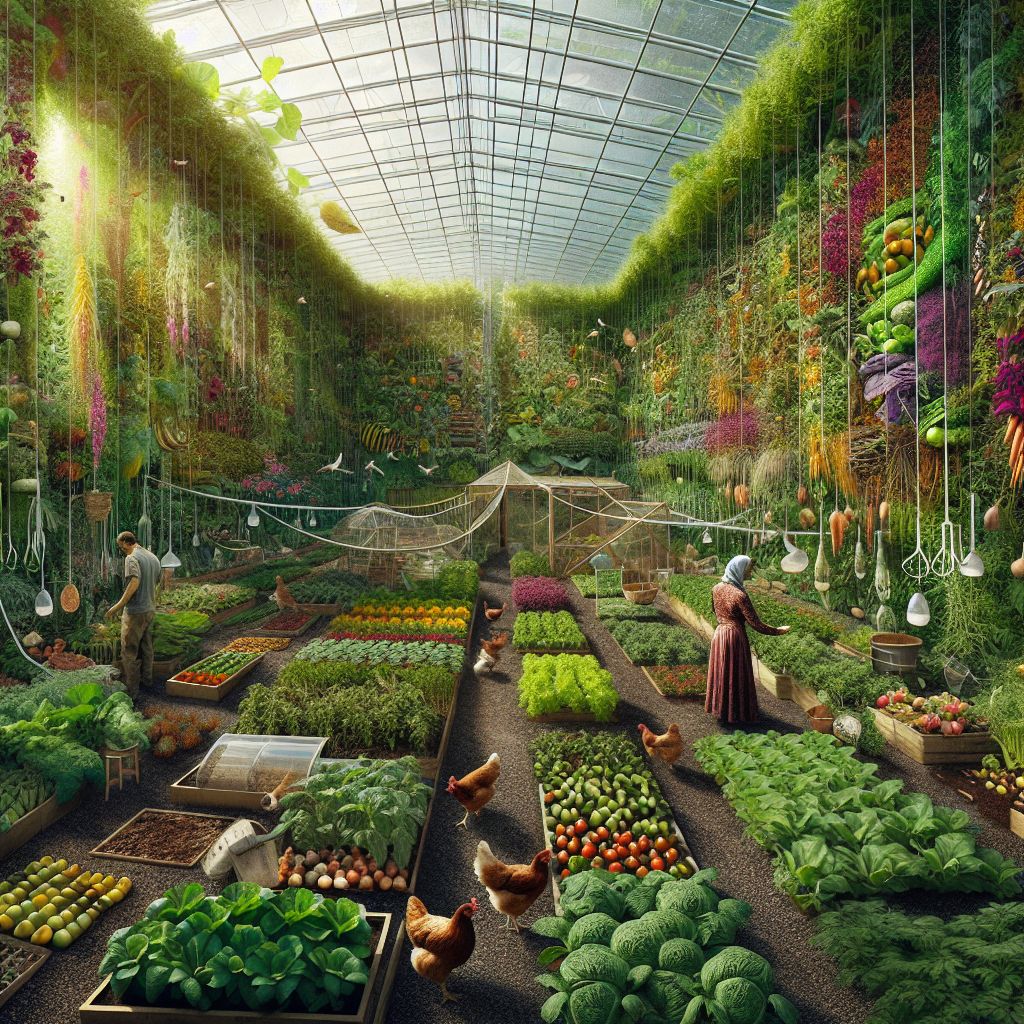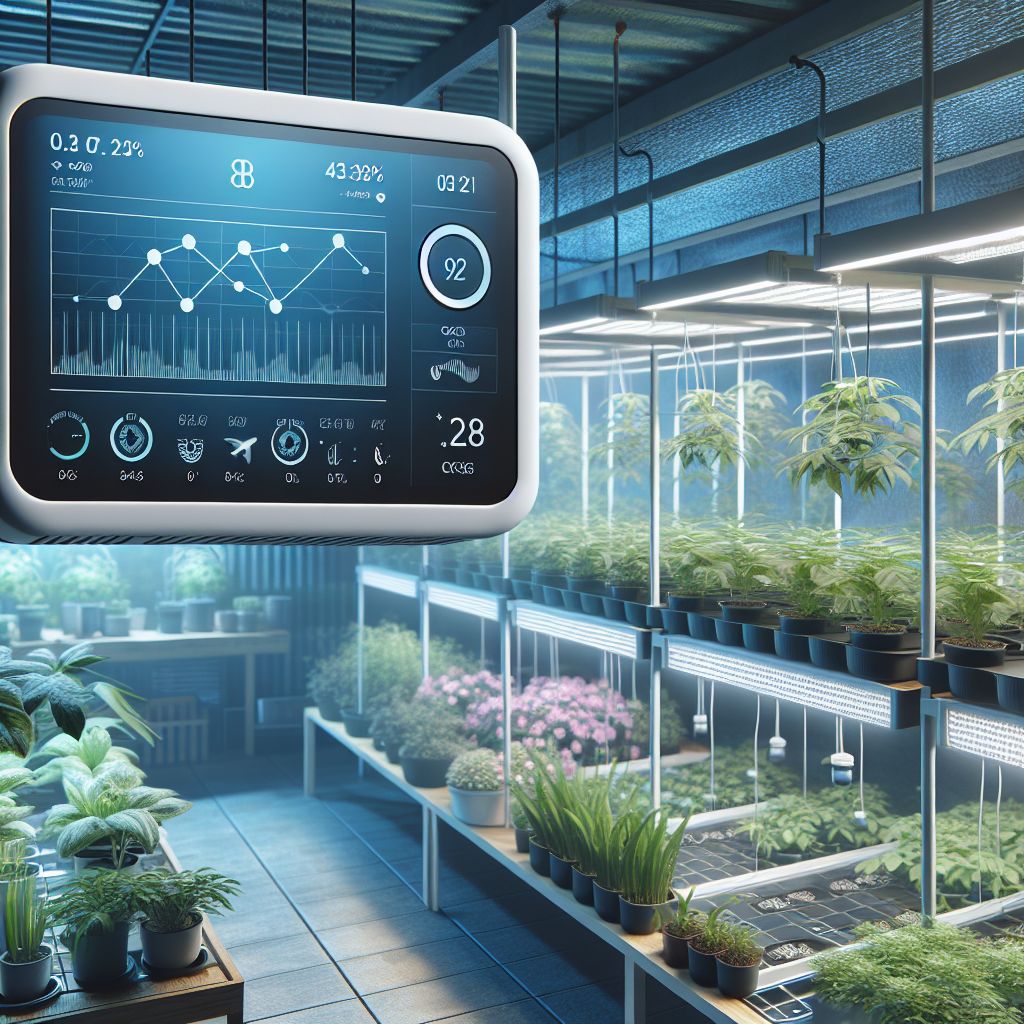Key Takeaways
- Urban farming transforms underutilized city spaces into productive green areas.
- Innovative techniques like hydroponics and aeroponics allow for farming without soil.
- Vertical farming and smart greenhouses utilize technology to maximize yield in small areas.
- Community engagement and sustainable practices are crucial for the success of urban farms.
- Education and policy reform can support the growth of urban agriculture.
Green Shoots in Concrete Jungles: The Rise of Urban Farming
Picture this: lush greenery sprouting between skyscrapers, fresh tomatoes growing on rooftops, and communities gathering to tend gardens where once there were only pavements. This isn’t a scene from a utopian novel, it’s the reality of urban farming, a movement turning cities across the USA into fertile ground for fresh produce.
How Innovative Farming Techniques Mark the Urban Landscape for the USA
Urban agriculture is more than a trend, it’s a necessity. With over 80% of the American population living in urban areas, we need to rethink our food systems. City farming isn’t just about food, it’s about reimagining our relationship with the environment, community, and our health.
From Rooftops to Vacant Lots: Urban Farms Sprout Up
Every empty space in the city is an opportunity for growth. Rooftops, balconies, and even abandoned lots are being transformed into verdant oases. These spaces are not only providing fresh, local produce but also creating a green buffer against the concrete landscape.
But how do you start? Begin with assessing your space, understanding what you can grow, and then gear up to get your hands dirty. Whether it’s a window box with herbs or a communal garden on a reclaimed lot, every plant counts.
Transforming Cityscapes through Agriculture
Urban farming is changing the way we think about city living. It’s not just about adding a touch of green to the grey, it’s about creating sustainable ecosystems that support the health of the environment and urban dwellers alike.
Most importantly, city farming helps reduce our carbon footprint by cutting down the miles food travels from farm to plate. Therefore, it’s a win-win for you and the planet.
The Push Towards Sustainability in Urban Environments
Urban agriculture is about sustainability. By using less water, generating less waste, and reducing the need for transport, urban farms are a testament to what we can achieve when we work with nature, not against it.
Producing Fresh Food Where Space Is Scarce
Space is at a premium in cities, but with the right techniques, you can grow an abundance of food. It’s all about making the most of what you have. Vertical gardens, hanging planters, and trellises are your best friends in the quest for maximizing yield in a small area.
Remember, the key to successful urban farming is starting small and thinking big. Choose crops that are known for their high yield and low maintenance, like leafy greens, herbs, and cherry tomatoes.
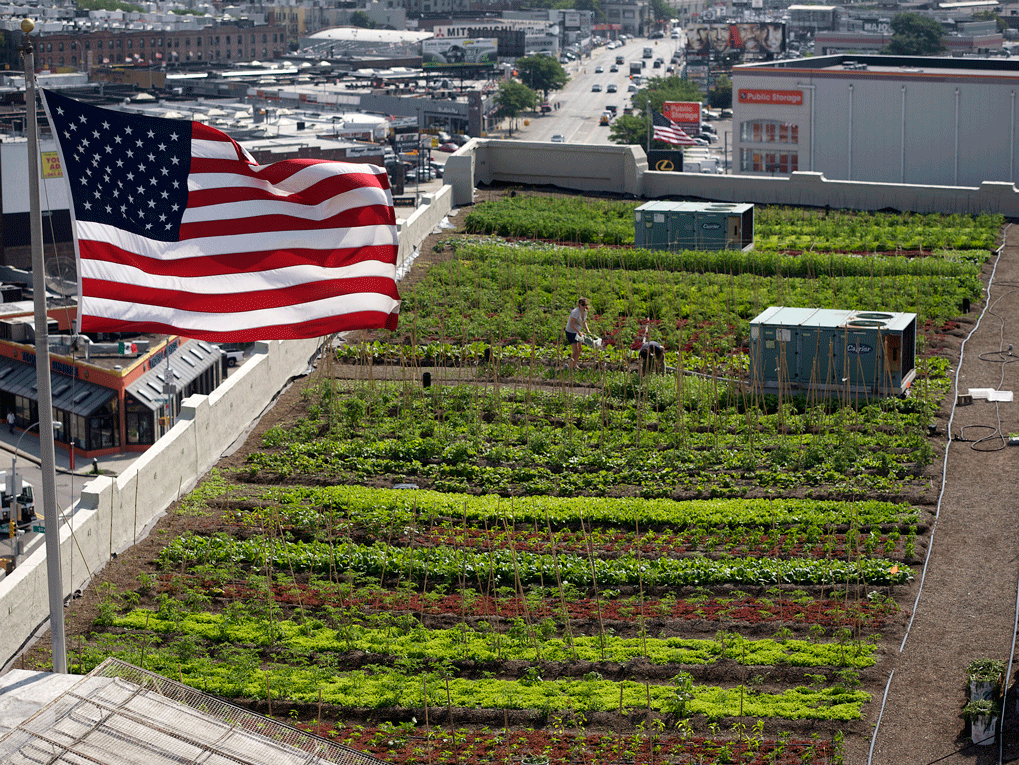
“City Slicker to Farmer …” from medium.com
Innovations Fueling Urban Farming Success
Innovation is the heart of urban farming. As city farmers, we’re constantly experimenting with new methods to grow more with less. Let’s dive into some of these groundbreaking techniques that are making waves in the world of urban agriculture.
AeroFarms, a leader in indoor vertical farming, utilizes aeroponics to grow leafy greens using 95% less water than field farming. Their closed-loop system is a game-changer for urban agriculture.
Aeroponics: Soaring High Without Soil
Aeroponics is like science fiction come to life. Plants are suspended in the air while nutrient-rich mist nourishes their roots. This soil-less method not only saves space but also conserves water, making it perfect for urban environments.
Here’s how you can get started with aeroponics:
- Choose a small, aeroponic kit to understand the basics.
- Start with easy-to-grow plants like lettuce or basil.
- Monitor your plants regularly to ensure they receive the right amount of nutrients and light.
Hydroponics: Circulating Life in Water
Hydroponics is another soil-less wonder, where plants thrive in a water-based, nutrient-rich solution. It’s a highly efficient way to grow food in confined spaces, and it’s easier to control than traditional gardening.
Here are a few steps to get you started with hydroponics:
- Pick a simple hydroponic system that fits your available space.
- Use a water-soluble, complete nutrient solution specifically designed for hydroponics.
- Keep an eye on the pH levels and nutrient balance to keep your plants happy.
Aquaponics: Symbiosis between Fish and Plants
Imagine a system where fish and plants grow together in harmony. That’s aquaponics for you – a combination of aquaculture (raising fish) and hydroponics (growing plants in water). The fish waste provides organic food for the plants, and the plants naturally filter the water for the fish. It’s a closed-loop system that’s efficient and eco-friendly.
Starting an aquaponics system can be as simple or complex as you want it to be:
- Begin with a small, home-based kit to learn the ropes.
- Choose hardy fish like tilapia and fast-growing leafy greens.
- Maintain a balanced ecosystem by regularly checking water quality.
Not only does aquaponics use about 90% less water than traditional farming, but it also gives you two products to enjoy: fresh fish and vegetables right from your own home.
Vertical Farming: Stacking Up the Green
Vertical farming is like building a green skyscraper. It’s all about growing up, not out. By stacking layers of plants on top of each other, vertical farms can produce more food per square foot than traditional farms or gardens. And because they’re often indoors, these farms can operate year-round, rain or shine.
To get started with vertical farming, here’s what you need to do:
- Use shelving units to create multiple levels of growing space.
- Employ LED grow lights to provide your plants with the necessary light spectrum.
- Opt for climbing plants like beans or vining tomatoes to make the most of your vertical space.
Vertical farming can revolutionize urban agriculture by turning even the smallest spaces into productive areas.
Smart Greenhouses: Tech That Grows on You
Smart greenhouses are the future of urban farming. They’re equipped with sensors and automation to create the perfect environment for plants to flourish. By controlling factors like temperature, humidity, and light, smart greenhouses can significantly increase efficiency and yield.
Here’s how to integrate smart greenhouse technologies:
- Start with a basic greenhouse and add sensors to monitor environmental conditions.
- Automate watering and lighting to ensure plants receive consistent care.
- Use data from your sensors to make informed decisions about plant care and optimization.
With the right setup, a smart greenhouse can be a year-round food factory, even in the heart of the city.
Key Techniques for Prosperous Urban Harvests
Successful urban farming isn’t just about the right technology, it’s also about the right techniques. Let’s explore some of the key methods that can help you achieve a bountiful harvest in an urban setting, such as those involved in smart greenhouse technology.
Maximizing Yield in Minimal Spaces
When space is limited, every inch counts. To maximize your yield:
- Choose high-yield and fast-growing crops.
- Practice succession planting by rotating crops to keep the soil productive.
- Use companion planting to deter pests and encourage growth.
By carefully planning and utilizing every available space, you can create a surprisingly productive urban farm.

Organic Pest Control for Healthy Crops
Pests are a challenge for any gardener, but in the city, you want to avoid chemical pesticides. Instead, opt for organic pest control methods:
- Attract beneficial insects like ladybugs and lacewings to eat harmful pests.
- Use physical barriers such as netting or row covers to protect your crops.
- Plant pest-repelling herbs like basil and mint among your vegetables.
With these natural strategies, you can keep your urban farm healthy and productive without resorting to harmful chemicals.
Composting in the City: Waste Not, Want Not
Composting is a fantastic way to reduce kitchen waste and improve your urban farm’s soil. Even in an apartment, you can compost using a small bin and a process called vermicomposting, which uses worms to break down scraps.
Here’s how to start composting in the city:
- Set up a compost bin in a balcony, patio, or under the sink.
- Add a mix of green (kitchen scraps) and brown (dry leaves or paper) materials.
- Regularly turn your compost and keep it moist to encourage decomposition.
Compost will enrich your soil, leading to healthier plants and more robust yields.
Harnessing Solar Power for Sustainable Growth
Solar power isn’t just for heating your water or powering your home, it can also be a boon for your urban farm. By using solar-powered pumps for watering systems or solar panels to power greenhouse lights, you can reduce your carbon footprint while keeping your plants thriving.
Consider these solar-powered solutions for urban agriculture:
- Install solar panels to power automated watering systems.
- Use solar-powered grow lights to extend the growing season.
- Employ solar dehydrators to preserve excess produce from your harvest.
By harnessing the power of the sun, your urban farm can be both sustainable and self-sufficient.
Spotlight on Successful City Farms
Across the nation, urban farms are not just surviving, they’re thriving. Let’s shine a light on a few standout examples of urban agriculture done right.
New York’s Sky-High Gardens
In the Big Apple, space is at an absolute premium, but that hasn’t stopped New Yorkers from creating lush gardens in the sky. Rooftop farms like Brooklyn Grange have become models of urban agriculture, providing fresh produce to local restaurants and residents alike.
What you can learn from them:
- Utilize flat rooftops to create green spaces.
- Host community events to engage local residents.
- Run educational programs to spread knowledge about urban farming.
Brooklyn Grange demonstrates that with creativity and community support, urban farming can flourish even in the most densely populated areas.
Chicago’s Community Food Gardens
Chicago’s urban agriculture scene is all about community. From non-profits like The Plant that repurpose old buildings into food production hubs to the city’s many community gardens, Chicagoans are proving that when a community comes together, they can turn any space into a productive farm.
Takeaways from Chicago’s success:
- Collaborate with local organizations to find and develop spaces for farming.
- Focus on education to empower residents with the skills to grow their own food.
- Create a network of urban farmers to share resources and knowledge.
Community engagement is the backbone of Chicago’s urban agriculture, and it’s a model that can be replicated in cities everywhere.
Los Angeles’ Urban Orchard Revolution
Los Angeles is known for its sprawl, but between the freeways and the suburbs, there’s an urban orchard revolution taking root. Organizations like Fallen Fruit have taken to planting fruit trees in public spaces, making fresh fruit accessible to all.
Here’s what LA’s approach teaches us:
- Plant fruit trees in public spaces for the community to enjoy.
- Map existing fruit trees and encourage public harvesting where allowed.
- Work with city officials to support urban orchard initiatives.
LA’s urban orchards are a testament to the power of public space and the right to fresh, local food.
Navigating Challenges to Cultivate Change
Urban farming isn’t without its challenges. Limited space, scarce resources, and policy hurdles can make it tough to get started. But with perseverance and ingenuity, these obstacles can be overcome.
Dealing with Limited Space and Resources
Space and resources are precious in the city. To deal with these limitations:
- Get creative with container gardening and vertical spaces.
- Seek out community gardens or shared spaces where resources can be pooled.
- Recycle and repurpose materials whenever possible to conserve resources.
Remember, even the smallest effort can lead to a ripple effect of positive change in urban agriculture.
Policy and Zoning Hurdles for Urban Farmers
Zoning laws and city policies can be tricky for urban farmers to navigate. However, many cities are recognizing the value of urban agriculture and are beginning to support it through policy changes.
Here’s how to work within the system:
- Understand your local zoning laws and seek permits where necessary.
- Engage with policymakers to advocate for urban agriculture-friendly regulations.
- Join urban farming coalitions to increase your voice and influence.
Change is possible when urban farmers band together to push for policies that recognize and support their efforts. Learn more about these initiatives through changing urban agriculture through tech and innovation.
Building a Community around Urban Agriculture
Urban farming is as much about community as it is about cultivation. Building a strong community around your farm can lead to a more resilient and supportive environment for growth.
To foster a community:
- Host workshops and events to teach others about urban farming.
- Create volunteer opportunities to involve locals in the farming process.
- Share your harvest with neighbors to spread the bounty and goodwill.
When the community is involved, urban farming becomes more than just growing food, it becomes a movement that can transform cities for the better.
Urban agriculture is an exciting frontier, ripe with possibilities. By embracing innovative techniques and fostering community involvement, we can make our cities greener, more sustainable, and more self-sufficient. So, roll up your sleeves, and let’s get growing!
The Future of Farming: Urban Edition
The seeds of tomorrow are being planted today in the heart of our cities. Urban agriculture is not just a passing trend, it’s the future of farming, redefined and reshaped for the urban landscape. As we look ahead, we see a horizon where technology, innovation, and community coalesce to create a sustainable, green, and productive urban environment.
With the global population projected to reach nearly 10 billion by 2050, and with most people living in urban areas, the significance of urban agriculture will only continue to grow. The need for fresh, local produce and the desire for green spaces will drive the evolution of city farming, turning rooftops into gardens and empty lots into food forests.
Technological Advances on the Horizon
Technological innovation is a key player in the urban agriculture narrative. The future will bring smarter, more efficient farming methods that maximize output while minimizing environmental impact. Sensors, AI, and automation will streamline farming operations, making it easier to manage urban farms of all sizes.
Imagine drones pollinating plants and robots tending to vertical farms. These advancements will not only revolutionize the way we grow food in the city but also make urban farming more accessible to everyone, regardless of their gardening experience.
Education and Advocacy for Urban Farming Practices
Education is the cornerstone of any significant change, and urban farming is no exception. Community programs and school curriculums will increasingly incorporate urban agriculture, teaching the next generation the importance of sustainable food systems. Through workshops and hands-on experiences, more people will learn the skills needed to start their own urban gardens.
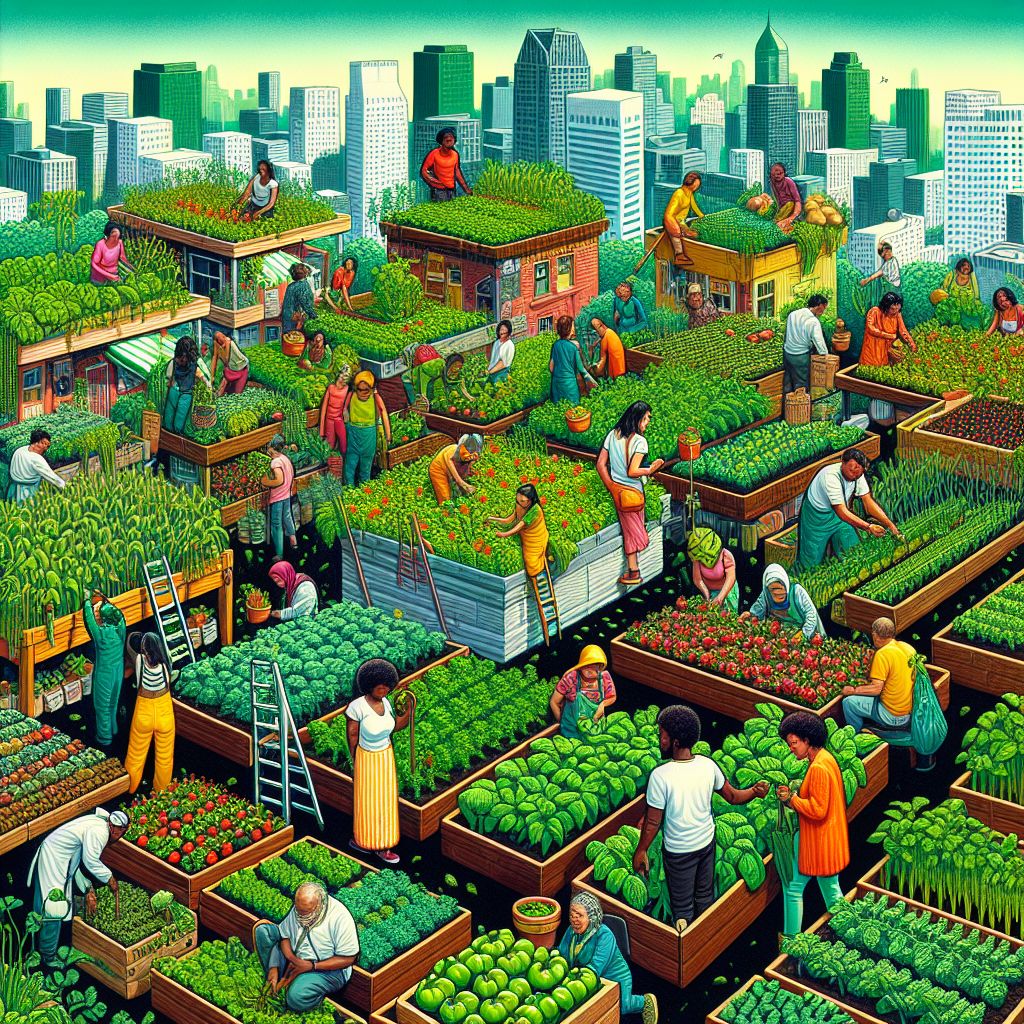
Expanding Urban Agriculture’s Role in the Food System
Urban agriculture will expand its role in the food system, transitioning from niche to necessity. As urban farms become more prolific, they will play a critical role in food security, providing a buffer against supply chain disruptions and making fresh produce more accessible in food deserts.
FAQs on Urban Agriculture USA
For many, urban farming is a new and exciting concept, but it comes with its share of questions. Here are some frequently asked questions that can help clarify doubts and provide direction for those interested in joining the urban agriculture movement.
How Can I Start an Urban Garden with Limited Space?
Starting an urban garden in a limited space is all about creativity and making the most of what you have. Here’s how to get started:
- Assess your available space, be it a windowsill, balcony, or rooftop.
- Choose container-friendly plants that don’t require deep soil, like herbs, leafy greens, or strawberries.
- Use vertical space by installing shelves or hanging planters.
- Consider community gardens if you lack personal outdoor space.
“I transformed my tiny balcony into a mini herb garden using recycled containers and a simple drip irrigation system made from old water bottles. It’s amazing how much you can grow in such a small space!” – Jamie, Urban Gardener
With a little ingenuity, you can grow your own slice of nature, no matter the size of your urban dwelling.
What Are the Most Cost-effective Crops for Urban Farming?
When considering cost-effectiveness, think about crops that offer high yields, quick turnover, and continuous harvest. Here are some top picks for your urban farm:
- Leafy greens like lettuce, spinach, and kale – they grow quickly and can be harvested multiple times.
- Herbs such as basil, cilantro, and parsley – they’re in constant demand and can be grown in small spaces.
- Tomatoes and peppers – while they take longer to mature, they offer a substantial yield over time.
These crops not only save you money at the grocery store but also provide the satisfaction of eating what you’ve grown yourself.
Can Urban Farms Really Impact Local Food Security?
Yes, urban farms can significantly impact local food security. They provide fresh produce in areas where supermarkets are scarce, and they can be a reliable food source during times of crisis. By growing food locally, urban farms reduce dependence on long-distance food supply chains and offer a fresher, more nutritious alternative.
Moreover, urban farms can act as educational centers, teaching community members about nutrition and sustainable practices, further contributing to the resilience of local food systems.
What Kind of Technology Is Used in Urban Farming?
Urban farming leverages a variety of technologies to optimize growth and efficiency. These include:
- Hydroponic systems that circulate nutrient-rich water, eliminating the need for soil.
- Aeroponic systems that mist plant roots with nutrients, using even less water than hydroponics.
- LED grow lights that provide plants with the ideal light spectrum for photosynthesis, crucial for indoor gardens.
- Automated irrigation systems that ensure plants receive the right amount of water at the right time.
- Climate-controlled greenhouses powered by renewable energy sources.
These technologies are making urban farming more productive, sustainable, and accessible than ever before.
How to Get Involved with Urban Farming Communities?
Getting involved with urban farming communities is a great way to learn, share resources, and connect with like-minded individuals. Here’s how to start:
- Search for local urban gardening groups on social media or community bulletin boards.
- Attend local workshops or events to meet other urban farmers and learn new skills.
- Volunteer at a community garden or urban farm to gain hands-on experience.
- Participate in online forums to ask questions, share experiences, and get advice.
Community is at the heart of urban agriculture, and there’s a place for everyone who wants to be a part of this growing movement.
Urban farming is not just a way to bring fresh produce to the table, it’s a lifestyle that promotes sustainability, health, and community. Whether you’re a seasoned gardener or a curious newcomer, the world of urban agriculture is ripe for exploration. With the right approach and a bit of creativity, you can turn any urban space into a thriving garden that nourishes both the body and the soul. So let’s embrace this green revolution and cultivate a brighter, more sustainable future, one urban farm at a time.


